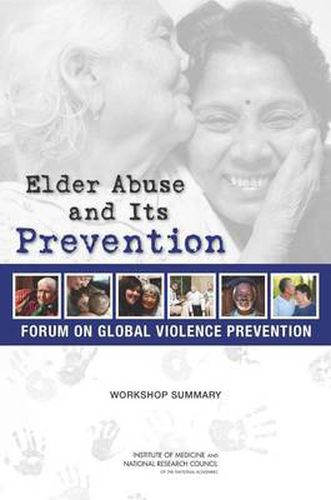Readings Newsletter
Become a Readings Member to make your shopping experience even easier.
Sign in or sign up for free!
You’re not far away from qualifying for FREE standard shipping within Australia
You’ve qualified for FREE standard shipping within Australia
The cart is loading…






Elder Abuse and Its Prevention is the summary of a workshop convened in April 2013 by the Institute of Medicine’s Forum on Global Violence Prevention. Using an ecological framework, this workshop explored the burden of elder abuse around the world, focusing on its impacts on individuals, families, communities, and societies. Additionally, the workshop addressed occurrences and co-occurrences of different types of abuse, including physical, sexual, emotional, and financial, as well as neglect. The ultimate objective was to illuminate promising global and multisectoral evidence-based approaches to the prevention of elder maltreatment. While the workshop covered scope and prevalence and unique characteristics of abuse, the intention was to move beyond what is known about elder abuse to foster discussions about how to improve prevention, intervention, and mitigation of the victims’ needs, particularly through collaborative efforts. The workshop discussions included innovative intervention models and opportunities for prevention across sectors and settings.
Violence and related forms of abuse against elders is a global public health and human rights problem with far-reaching consequences, resulting in increased death, disability, and exploitation with collateral effects on well-being. Data suggest that at least 10 percent of elders in the United States are victims of elder maltreatment every year. In low- and middle-income countries, where the burden of violence is the greatest, the figure is likely even higher. In addition, elders experiencing risk factors such as diminishing cognitive function, caregiver dependence, and social isolation are more vulnerable to maltreatment and underreporting. As the world population of adults aged 65 and older continues to grow, the implications of elder maltreatment for health care, social welfare, justice, and financial systems are great. However, despite the magnitude of global elder maltreatment, it has been an underappreciated public health problem. Elder Abuse and Its Prevention discusses the prevalence and characteristics of elder abuse around the world, risk factors for abuse and potential adverse health outcomes, and contextually specific factors, such as culture and the role of the community.
$9.00 standard shipping within Australia
FREE standard shipping within Australia for orders over $100.00
Express & International shipping calculated at checkout
Elder Abuse and Its Prevention is the summary of a workshop convened in April 2013 by the Institute of Medicine’s Forum on Global Violence Prevention. Using an ecological framework, this workshop explored the burden of elder abuse around the world, focusing on its impacts on individuals, families, communities, and societies. Additionally, the workshop addressed occurrences and co-occurrences of different types of abuse, including physical, sexual, emotional, and financial, as well as neglect. The ultimate objective was to illuminate promising global and multisectoral evidence-based approaches to the prevention of elder maltreatment. While the workshop covered scope and prevalence and unique characteristics of abuse, the intention was to move beyond what is known about elder abuse to foster discussions about how to improve prevention, intervention, and mitigation of the victims’ needs, particularly through collaborative efforts. The workshop discussions included innovative intervention models and opportunities for prevention across sectors and settings.
Violence and related forms of abuse against elders is a global public health and human rights problem with far-reaching consequences, resulting in increased death, disability, and exploitation with collateral effects on well-being. Data suggest that at least 10 percent of elders in the United States are victims of elder maltreatment every year. In low- and middle-income countries, where the burden of violence is the greatest, the figure is likely even higher. In addition, elders experiencing risk factors such as diminishing cognitive function, caregiver dependence, and social isolation are more vulnerable to maltreatment and underreporting. As the world population of adults aged 65 and older continues to grow, the implications of elder maltreatment for health care, social welfare, justice, and financial systems are great. However, despite the magnitude of global elder maltreatment, it has been an underappreciated public health problem. Elder Abuse and Its Prevention discusses the prevalence and characteristics of elder abuse around the world, risk factors for abuse and potential adverse health outcomes, and contextually specific factors, such as culture and the role of the community.